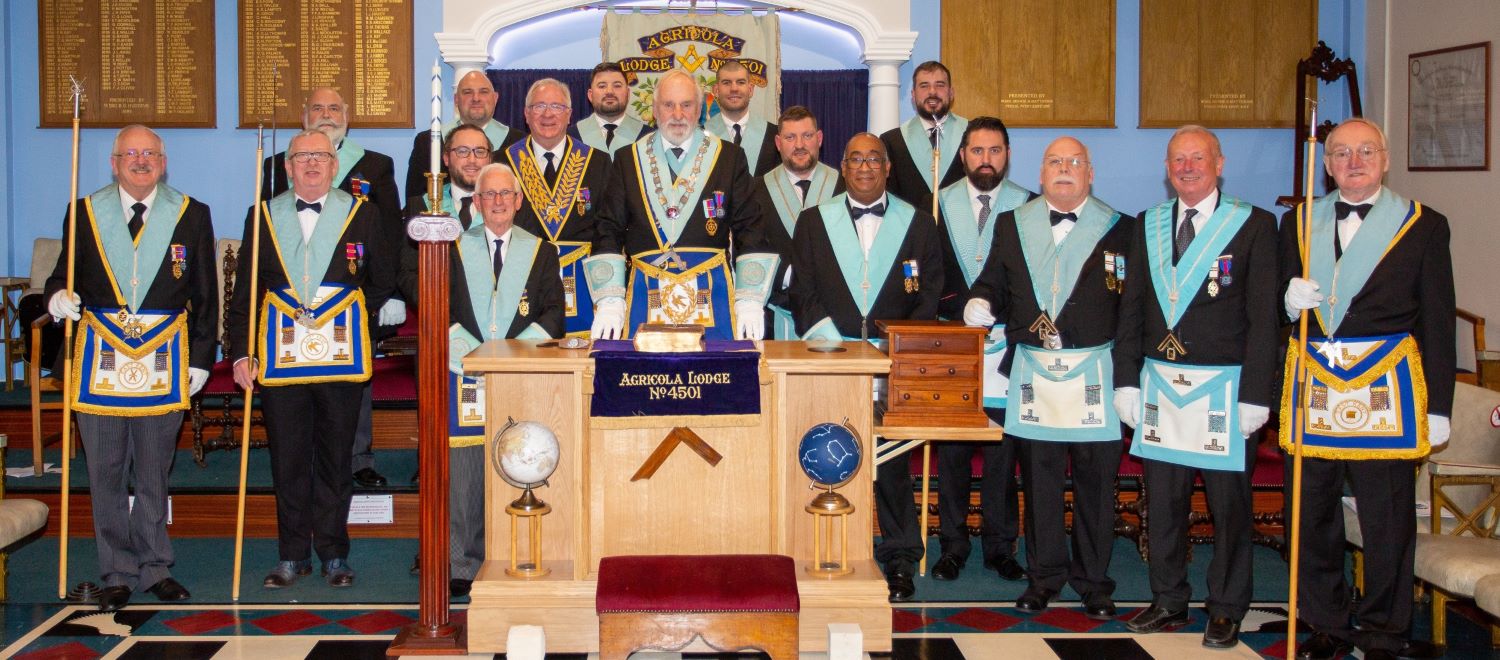Our October 2017 meeting saw the Worshipful Master, Neil Sadler welcome a most special and distinguished guest in the person of Past Deputy Provincial Grand Master, Roger Odd. The purpose of Roger’s visit was to present Agricola Lodge with a splendid pair of stone Ashlars in recognition of the Lodge’s gererous support of the Province of East Kent’s Tercentenary Appeal.

In 2016, to celebrate 300 years since the founding of the United Grand Lodge of England (UGLE), the Masonic Provinces of East Kent, West Kent, Surrey and Sussex came together to launch an appeal in aid of restoration works at Canterbury Cathedral. The result was that over £300,000 was raised to fund important repairs to, and restoration of, the stonework in the NW Transept Tower of the Cathedral.
 Ashlars have a symbolic importance in Freemasonry; as the Stonemason’s transformation of the “Rough” ashlar into the “Perfect” cube of the dressed stone, is taken as a metaphor for the process which we refer to as “making good men better.” These presentation Ashlars are made from the same Caen Limestone with which Canterbury Cathedral is faced. They feature the Square and Compasses logo of UGLE on the front and our Lodge number, 4501 on the reverse.
Ashlars have a symbolic importance in Freemasonry; as the Stonemason’s transformation of the “Rough” ashlar into the “Perfect” cube of the dressed stone, is taken as a metaphor for the process which we refer to as “making good men better.” These presentation Ashlars are made from the same Caen Limestone with which Canterbury Cathedral is faced. They feature the Square and Compasses logo of UGLE on the front and our Lodge number, 4501 on the reverse.

During his talk Roger described how Kent Freemasonry’s close and valued relationship with the Cathedral began over 150 years ago. He passed on the thanks of both the Dean of Canterbury, the Very Rev Dr. Robert Willis, and The Provincial Grand Master of East Kent, Geoffrey Dearing.
This meeting also saw the presentation of a Grand Lodge Certificate to Bro. Peter Jacobs by Agricola’s own Past Assistant Provincial Grand Master Roger Waltham. A Grand Lodge Certificate is presented to every Freemason on completion of the Three Degrees, at which point he becomes a Master Mason.
This evening also saw the election of our Master Elect, Paul Constable. Paul will be installed into the Worshipful Master’s Chair at our Installation meeting on 24th November 2017. Full details and booking facilities are available in the Events section of this site.
As usual, the formal part of the meeting was followed by our excellent Festive Board, the highlight of which was a rather splendid Steak and Ale Pie!…
Report: Richard Carney
Photos: Neil Marshall

 There can be few Lodges in the country, whose name gets mispronounced as often as ours!
There can be few Lodges in the country, whose name gets mispronounced as often as ours!



















